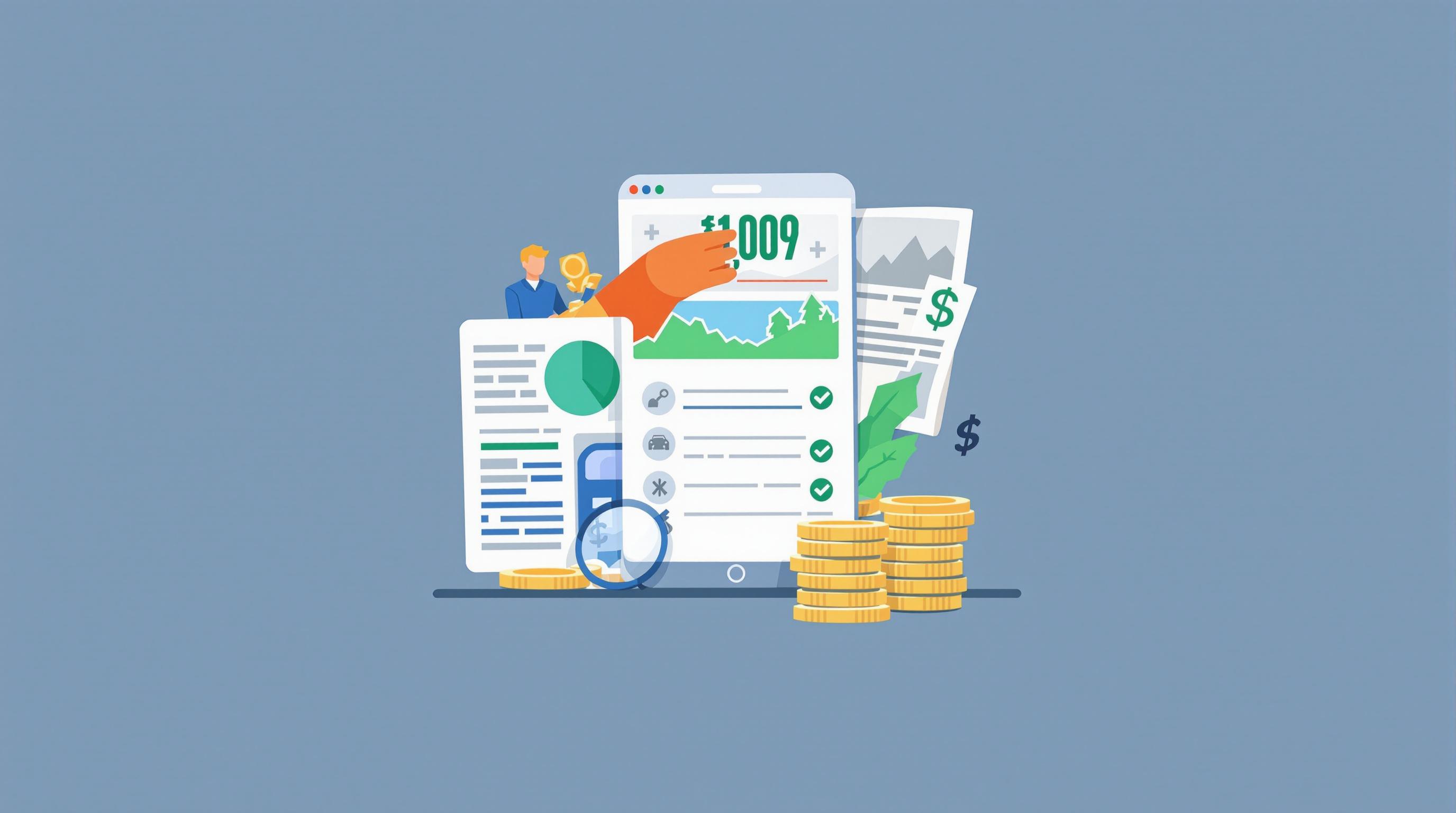Related Articles
- Top 7 Game-Changing Riders Released Since 2019 That Redefine How You Customize Your Life Insurance Coverage
- Top 5 Game-Changing Insurance Add-Ons from the Past Five Years Redefining Rider Benefits and Coverage
- The Silent Impact of Guaranteed Issue Insurance on Elderly Mental Health and Community Social Networks
- Top 6 Emerging Simplified Issue Policies Since 2019 That Redefine Risk and Flexibility for Modern Buyers
- How Changing Remittance Intervals Influence Insurer-Provider Partnerships in Healthcare Coordination
- How Seasonal Spending Cycles Secretly Shape Insurance Premium Timing and Consumer Choices
6 Critical Ways Changing Insurance Payment Frequencies Can Influence Your Long-Term Financial Security Planning
6 Critical Ways Changing Insurance Payment Frequencies Can Influence Your Long-Term Financial Security Planning
6 Critical Ways Changing Insurance Payment Frequencies Can Influence Your Long-Term Financial Security Planning
Understanding Insurance Payment Frequencies
Insurance payment frequencies refer to the schedule at which you make premium payments to your insurer. Common frequencies include monthly, quarterly, semi-annual, and annual payments. Each option offers distinct advantages and disadvantages depending on your financial situation.
Choosing the appropriate payment frequency can directly impact your cash flow, budgeting strategies, and overall financial stability. Regular smaller payments such as monthly premiums may seem manageable but could carry additional fees. Conversely, annual payments require a larger upfront amount but often come with discounts.
Being aware of these differences helps in aligning your insurance responsibilities with your long-term financial planning goals. This foundational understanding is essential for making informed decisions that safeguard your financial security.
Impact on Cash Flow Management
Changing your insurance payment frequency influences how you manage your monthly cash flow. Paying premiums monthly spreads out expenses into smaller increments, easing immediate budget pressures.
However, monthly payments sometimes include extra administrative fees, which could add up over time and increase the total cost of insurance. On the other hand, opting for annual payments requires a significant upfront sum, which may strain short-term liquidity but reduces recurring costs.
Effectively managing cash flow with the right payment frequency is essential to maintain healthy liquidity while continuing to meet insurance obligations. This balance supports your broader financial security planning by reducing unexpected financial stress.
Cost Implications of Payment Frequencies
The cost of insurance can vary significantly depending on the payment schedule you choose. Insurers often apply discounts for less frequent payments, such as annual or semi-annual premiums, to incentivize bulk payments and reduce processing costs.
Conversely, more frequent payments like monthly installments might involve additional fees, even if the total premium amount is identical. Over the long term, these fees can erode your financial resources and reduce the efficiency of your insurance budget.
Understanding the cost implications of each payment frequency allows you to select an approach that maximizes savings, contributing positively to your long-term financial security.
Psychological Effects on Financial Discipline
Payment frequency also impacts your psychological approach to spending and saving. Monthly bills may create a routine that fosters diligent financial discipline, reinforcing consistent budgeting habits.
Alternatively, making payments less often might lead to procrastination or underestimation of upcoming expenses, potentially disrupting your planning. However, less frequent payments can also free mental space from constant financial reminders.
Recognizing how payment frequency influences your mindset helps tailor strategies that maintain disciplined financial behavior, enhancing your capacity for long-term financial security.
Alignment with Income Schedules
Aligning insurance payments with your income schedule is a strategic way to ease financial planning. Monthly payments synchronize well with individuals paid on a monthly or biweekly basis, smoothing the budgeting process.
For those with irregular income streams, such as freelancers, less frequent payments might be better suited, providing a period to accumulate resources. Choosing the right payment frequency reduces stress linked to meeting deadlines and avoids penalties.
This alignment ensures your insurance commitments complement your cash inflows, reinforcing your overall financial security without causing undue hardship.
Effects on Savings and Investment Opportunities
The frequency of insurance payments can also influence your ability to save and invest. Paying annually might free up monthly funds that can be directed towards savings or investment accounts, potentially enhancing wealth accumulation over time.
Conversely, smaller, frequent payments may limit your ability to set aside larger sums for investment, impacting compound growth potential. Additionally, upfront savings from choosing less frequent payments can serve as emergency funds.
Considering how payment frequency affects your saving and investing capacity is crucial in molding a robust and scalable long-term financial security plan.
Risk of Policy Lapses and Financial Consequences
Frequent payments can reduce the risk of policy lapses caused by missed premiums, as smaller amounts are easier to manage regularly. Maintaining continuous coverage is critical for long-term financial protection.
On the flip side, less frequent payments mean larger amounts due at once, increasing the risk of missing a payment if funds are unavailable. Policy lapse can trigger reinstatement fees or loss of accumulated benefits.
Evaluating your ability to consistently meet payment obligations at different frequencies helps mitigate risks that could undermine your financial security.
Influence on Credit and Financial Reputation
Making timely insurance payments positively affects your creditworthiness and financial standing. Frequent payments provide more opportunities to demonstrate reliability to financial institutions.
Missing payments, regardless of frequency, can damage your credit score and complicate future borrowing or insurance underwriting. Choosing the payment frequency you can reliably maintain is essential.
Maintaining a good financial reputation through consistent insurance payments supports access to credit and other financial products that underpin long-term wealth management.
Tax Considerations Related to Payment Frequencies
Sometimes, insurance payment frequencies can affect tax deductions or benefits, particularly for business-related insurance or health plans. Annual lump sums may simplify record-keeping and tax preparation.
Periodic payments might provide incremental deductions but could complicate timing and documentation of expenses. Consulting tax professionals about your specific insurance policy is advisable to optimize benefits.
Accounting for tax implications of payment frequency ensures your financial security plan maximizes after-tax returns.
Adapting to Life Changes with Flexible Payment Options
Life events such as career shifts, income changes, or family growth often necessitate revising your insurance payment plan. Flexible payment frequencies provide adaptability to evolving financial circumstances.
Switching payment schedules can relieve temporary cash flow challenges or capitalize on financial windfalls for upfront discounts. Insurers often accommodate such changes to support customer retention.
Embracing payment flexibility enhances resilience in your long-term financial security planning by allowing adjustments without policy forfeiture.
Conclusion: Strategic Choice for Long-Term Security
Choosing the right insurance payment frequency is a nuanced decision impacting multiple facets of financial security. From cash flow and cost management to psychological discipline and risk mitigation, each factor carries weight.
By understanding these critical influences, you can align insurance payments with your broader financial goals, optimizing resources and protecting your future. Regular review and adjustment of payment frequencies in line with financial changes are recommended.
Prioritize informed decision-making and consultation with financial advisors to integrate insurance payments seamlessly into your comprehensive long-term financial security plan.
Sources:
Insurance Information Institute. "How Payment Frequency Affects Your Insurance Premium." (iii.org)
Forbes. "The Impact of Payment Frequency on Insurance Costs and Your Budget." (forbes.com)
Investopedia. "Payment Frequencies for Insurance Premiums." (investopedia.com)




